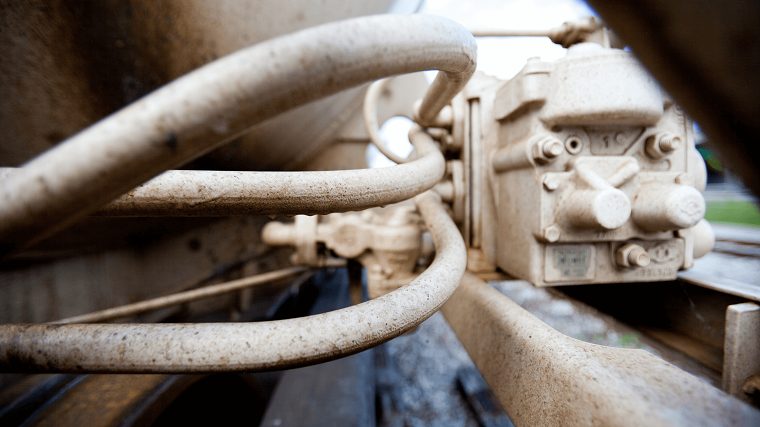Using Pulsed Eddy Current (PEC) to Inspect Lead-Clad Pipes

Noise control is an important health and safety consideration in many industrial operations.
Turbulence and vibrations in pipes are among the biggest culprits of noise pollution with the solution being to wrap a layer of noise-dampening material around the pipe in between the layer of conventional insulation and the weather jacket. Typically, this layer is made from a dense, soft and flexible material which reduces and absorbs the sound and lessens the vibration.
Lead-clad pipes pose a challenge
Up until the end of the 20thCentury, lead sheets were the primary means of controlling industrial noise in pipes because of their flexibility, ease-of-use and their excellent noise-attenuation properties. Despite health concerns about exposure to lead and regulatory concerns, many of these lead-clad pipes are still around and present challenges for operators in terms of inspection for corrosion-under-insulation (CUI).
Inspecting for CUI
Any piece of insulated equipment carries a risk of corrosion under insulation (CUI), the results of which can include unplanned and unnecessary shutdowns and accidents. To minimise the risk of CUI, regular inspection of insulated pipes and components is necessary.
Inspecting for CUI can be time-consuming and costly when it involves stripping back the insulating layers to check for signs of damage and wear and tear.
Some of the techniques used for CUI include visual inspection and phased-array UT with radiography an option where the insulating layers don’t have to be removed prior to inspection. However, radiography is not a good choice when it comes to lead-clad pipes because the highly dense nature of lead prevents the X-rays from penetrating through, which renders the technique ineffective.
The solution for inspecting lead-clad pipes for CUI
Pulsed eddy current (PEC) is an excellent means of inspecting lead-clad pipes for CUI without the need to remove any of the insulating layers, coating or fireproofing.
It is fast, cost-effective and safe to use and doesn’t require significant operator input. In situations where lead is present, radiography would be totally ineffective in testing for CUI – yet tests show that PEC produces the same information regardless of whether lead is present or not.
How PEC works
Because lead is weakly diamagnetic and has poor conductive properties, it does not interfere with the pulsed eddy currents that are applied to the surface under test.
One of the best PEC solutions on the market is the portable LyftTM PEC Inspection Solution, a high-performance instrument, designed specifically to support inspection for CUI.
The Lyft is suitable for use on a number of materials including lead, metal, aluminium, stainless steel and galvanized steel weather jackets and can scan wall thicknesses up to 64mm through insulation up to 203mm thick. A key feature is its real-time C-scan imaging and A-scan analysis, grid mapping and dynamic scanning and highly advanced reporting software, with the added benefit of rapid data acquisition (up to 15 readings per second). It can also operate in extremely hot conditions on surfaces up to 1200C.
Benefits of the Lyft system:
- Fast
- Cost-effective
- Accurate
- Compact and portable
- Easy to deploy and use
- Optimised pulser and receiver parameters and wall thickness measurements ensures repeatability and performance
- Reduced dependence on operator
- Enhanced productivity
If your operation is at risk of CUI, make sure your inspection methods cover all eventualities. If there are older pipes involved, they may well be wrapped with lead sheets and it makes sense to have an inspection solution that is effective across all materials, not just selective ones.
If you’d like to talk about an NDT solution that is tailor-made for your operation and which has the flexibility and capacity to evolve with your changing requirements, then you should talk to the technical equipment experts at Nexxis. We have years of industry experience and are genuinely concerned about developing a unique NDT and RVI solution that meets your unique requirements.
